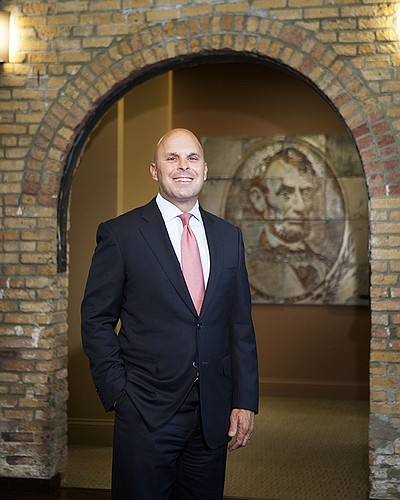With net income of nearly $313 million, and asset growth just below 18%, 2014 was clearly a good year for Gulf Coast based banks.
And while an improving economy might suggest more of the same in 2015, there's a good chance the number of banks that call the Gulf Coast home will be a lot smaller by the end of the decade.
“Over time, banks will come to the realization that the best way to maximize their investment is to get together with somebody else,” says Joe Chillura, CEO of Clearwater-based USAmeriBank, which grew its assets 6% last year to $3.1 billion. “It's healthy because it promotes larger institutions with stronger balance sheets that will have a better management team in place to sustain themselves through the up and down market shifts.”
In addition, the bottom lines at many banks have been pounded in recent years by expanded regulatory oversight. That's forced many lenders to add a number of non-revenue generating jobs that can be costly for smaller banks. In turn, the numbers of community banks, on the Gulf Coast and nationwide, is shrinking, for that reason and a host of other factors.
“There's a lot of pressure on small banks,” says Ted Peters, CEO of suburban Philadelphia-based Bluestone Financial Institutions Fund, and a 28-year bank executive. “The regulatory environment has become onerous, I don't care if they are state, or federal, or FDIC. They have all basically gotten very, very intense in their scrutiny, and are requiring a lot of small banks to beef up their staffs.”
There are few options in how smaller banks can absorb those regulatory costs, Peters adds, making a merger or acquisition quite attractive. That's what led him to go from running banks to investing in them, buying small ownership stakes in publicly traded institutions.
One bank leading the charge in finding acquisitions is CenterState Bank of Florida, which had the largest asset growth in 2014 of all community banks with a territory from Polk County south to Collier County. Based in Winter Haven, CenterState jumped 56%, from $2.4 billion to $3.8 billion in assets.
“We have been on a steady path when it comes to our vision,” says Chris Nichols, chief strategy officer for CenterState. “We made two acquisitions that were a part of that vision, and now we're really trying to focus on becoming a better bank.”
CenterState, which trades on the Nasdaq under the symbol CSFL, acquired Stuart-based Gulfstream Bancshares in 2013 for $76.9 million, and Boca Raton-based First Southern Bancorp in early 2014 for $189.5 million. The acquisitions have helped push CenterState ahead of USAmeriBank to become the region's second-largest institution in terms of assets, behind only St. Petersburg-based Raymond James Bank.
“If you take a look at the industry in general, we have gone through a phase where banks have been heavily scrutinized from a regulatory standpoint, and that is still the case,” Chillura says. “But I think everybody, and that means all banks, have realized that this is the new norm. They have adjusted their strategies based on the fact that there is going to be a little more oversight than there was prior to the last business downturn, and it might mean trying something different.”
Follow Michael Hinman on Twitter @BizTampaBay








